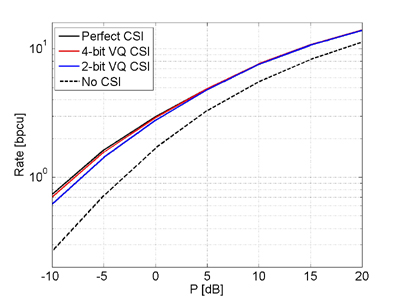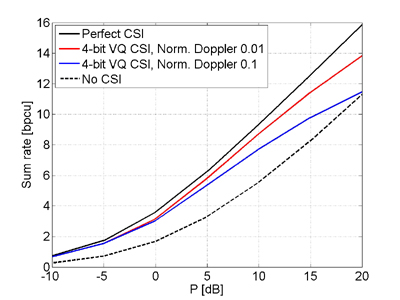Examples
Single-user mode

The graph on the left shows the comparison of system throughputs when one user at a time is scheduled by a base station.
The compared scenarios are: perfect channel state information at the base station, 4 and 2-bit feedback per frame and no channel state information at the transmitter (round-robin scheduling with equal power distribution). The system has been tested with the following parameters:
- - 10 users
- - 2 Tx antennas at BS
- - 2 Rx antennas at each UT
- - dual codebook design
Multi-user mode

The graph on the left shows the comparison of system throughputs when two users at a time are scheduled by a base station with the same set of parameters as above. The detection method is a simple thresholding device at each UT.
The design of the codebooks for time-correlated channnels (patent pending) allows the system to closely approach theoretical cooperative-system sum-rate with only 4-bits per frame for slower channels. For faster changing channels, the sum-rate can be easily improved by increasing the number of feedback bits per frame.